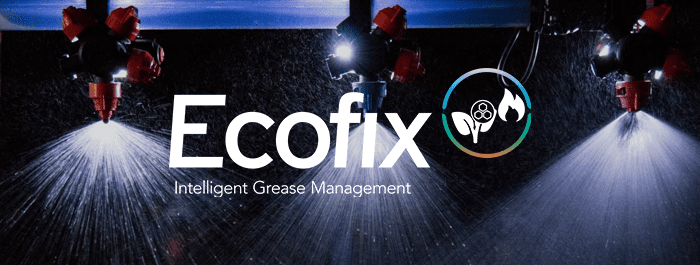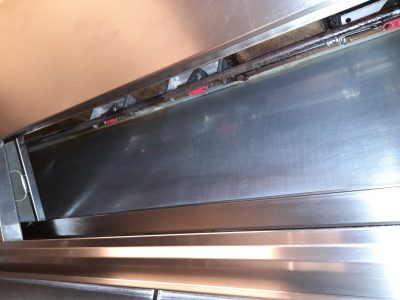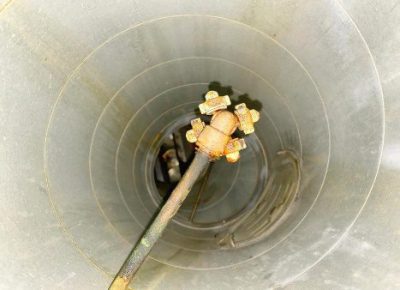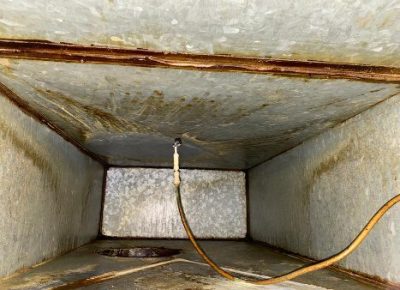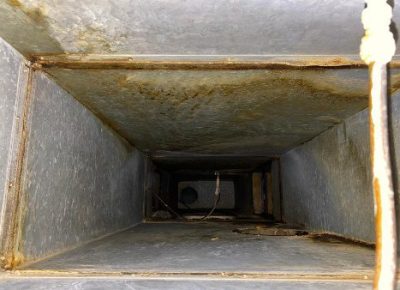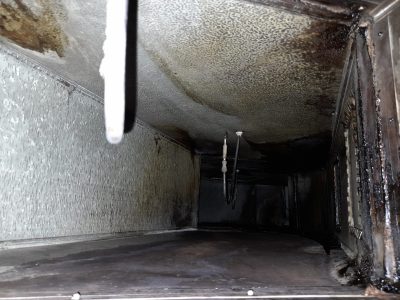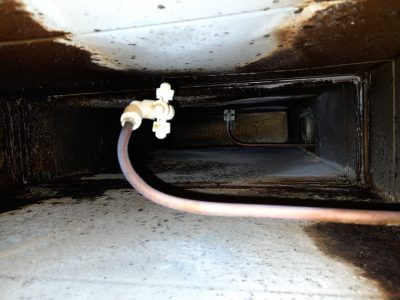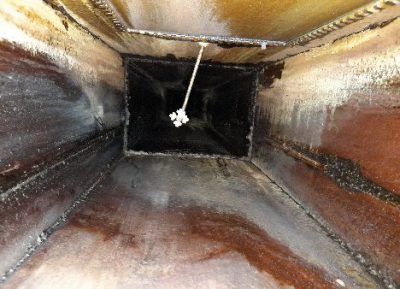Remediation
As discussed, Ecofix can be installed into any section of the KES. Older systems and even some modern designs suffer from access issues that cannot always be rectified with access doors and/or ductwork removal. In these cases, manual cleaning can be very difficult to achieve. Ecofix dosing can be programmed and concentrated to actively remediate large sections of inaccessible ductwork. The delivery system has been upgraded to suit this application and does require alteration from visit to visit. Any dosing is designed into the daily operation of the kitchen to work in line with maximum air flow. This flow of air not only helps to disperse the dose but acts as a carrier for any waste which is collected at the next bend and/or transition.
This photo of ductwork is from Brasserie Blanc Milton Keynes. It is situated within a ceiling void which has restricted access for manual cleaning. This section has not received any manual cleaning and has been fully remediated back to compliant standard.
